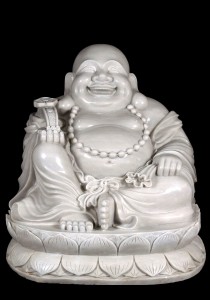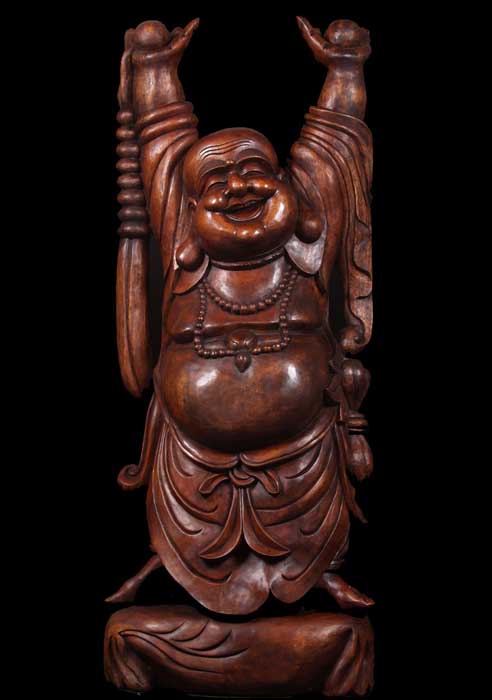
The origins of feng shui, a Chinese art of aesthetics, based on astronomy to help improve life by conjuring positive energy, dates back around three thousand years ago. The techniques of this ancient practice have evolved since the invention of the magnetic compass, but the goal of enhancing the human built environment with good qi (chee) remains the same. Qi is referred to as energy– a movable positive or negative life force. The basic principle of feng shui being, “positive energy attracts positive energy”.
The use of symbols play an important role as feng shui cures. Symbols are used for various purposes and help shift the surrounding energy. One of the most popular feng shui cures is a symbol that represents good luck, abundance, happiness, health and success – the Laughing Buddha. He is also known as Fat & Happy Buddha or Budai (Chinese) or Hotai (Japanese), based on an historical figure of an obese Zen monk, who wandered in the 10th century China. People believed that he was the incarnation of the Maitreya Buddha.
“positive energy attracts positive energy”
A Laughing Buddha statue is considered to bring auspicious energy and joyful blessings. His enormous belly signifies abundance – not of material wealth, but good fortune and health. This statue can come in a variety of sizes, postures, materials and colors. It is an individual choice on which statue helps to attract the feng shui energy one desires. A popular location for a Laughing Buddha statue is displayed off the floor near the main entry area of the home. Since he is also considered the patron of children; a statue could be perfect for a child’s room. The Buddha pose most ideal for wealth and prosperity is one that carries a pot of gold, ingots or sack filled with treasure.
Wherever he is lovingly displayed, remember to rub the belly for good luck!

